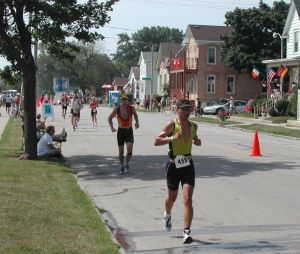Updated February 5, 2015
Perform the patient assessment in a manner that is sensible to patient’s injury or complaint, especially the secondary assessment
The runner hit the pavement hard. An EMT, an event medical volunteer, rushed to her side from a few feet away. The patient and the EMT were in a chaotic and dynamic scene as some runners stopped, other runners raced past, and spectators gasped, looked away, or offered to help. The EMT had no choice but to begin making a burst of simultaneous assessments and decisions.
Skill sheet presents assessment as linear
On a skill sheet, patient assessment is presented as a linear process. First size up the scene, then complete the primary assessment followed by the secondary assessment. The steps of the primary assessment might be initiated during the size-up and continue into the secondary assessment. Because the EMT was at the runner’s side so quickly, he blocked her from being trampled by other runners and put a hand on her head to stabilize her c-spine, all while looking to see if she was breathing.

Fix life threats as you find them
During the primary assessment, because of the urgency of the problems, provide treatments as you find the problems. If the patient doesn’t have a patent airway, then begin airway management. But, after your begin treatment or resolve a primary assessment problem, remember to complete the other components of the primary assessment.
Start secondary assessment with component that makes sense
There are three major components of the secondary assessment: patient history, vital signs, and physical exam. Start with the assessment component that is most suitable to the patient’s chief complaint. If the patient’s problem is trauma, then a detailed or head-to-toe physical exam maybe the best place to start. If the patient has a vague abdominal compliant, starting with the SAMPLE history will help you better understand the patient’s pain and the possible causes. For a patient with a problem that can be treated with a pharmacological intervention (like asthma or chest pain) start with getting a baseline set of vital signs.
Complete the entire assessment
Regardless of where you start, make sure to complete all three major components of the secondary assessment. You don’t have to complete the patient assessment as a linear process, but you do need to complete all the components. As you learn and improve your patient assessment skills, you can use a small notepad with the appropriate data fields for history, exam, and vital sign findings to ensure you collect all the information that is needed in a process that is logical for the patient and their complaint.
How do you make sure you complete all of the major components of the patient assessment? How can you help a new EMT overcome skill sheet rigidity?


